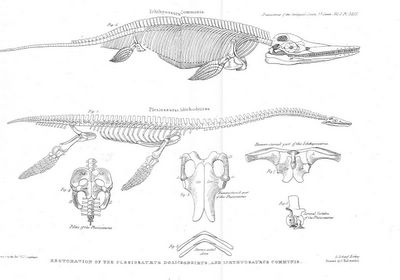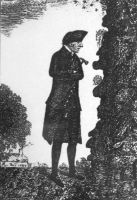"Life is the most important thing about the world, the most important thing about life is evolution. Thus, by consciously seeking what is most meaningful, I moved from poetry to mineralogy to paleontology to evolution." G.G. Simpson
From the web site supporting the excellent
PBS show “Evolution”:
As one of the founders of the "modern synthesis" of evolution, paleontologist
George Gaylord Simpson (June 16, 1902 - Oct 6, 1984) argued that the fossil record supports Darwin's theory that natural

selection acting on random variation in a population is the driving force behind evolution. Simpson was among the first to use mathematical methods in paleontology, and he also took into account newly discovered genetic evidence for evolution in his study of paleontology.
In his 1944 book,
Tempo and Mode in Evolution, Simpson divided evolutionary change into "tempo," the rate of change, and "mode," the manner or pattern of change, with tempo being a basic factor of mode.
Simpson saw paleontology, revealing the long history of life on earth, as a unique field through which to study the history of evolution.The early part of the twentieth century saw evolutionary theory embattled by disagreements over Darwin's emphasis on natural selection. The then-newly rediscovered work of Gregor Mendel in the nineteenth century was an uncomfortable fit with evolution, as many scientists saw it. They weren't at all certain that natural populations contained enough genetic variation for natural selection to create new species. So they entertained other explanations, including inheritance of acquired characteristics, "directed" variation toward a goal, or sudden large mutations that resulted in new species.
In the field of paleontology, the scientist who did most to resolve these questions was George Gaylord Simpson, who was on the staff of the American Museum of Natural History for 30 years.

At a time when other paleontologists were convinced that the fossil record could best be explained by directed variation, Simpson disagreed.
He said that fossil patterns needed no mystical or goal-oriented processes to explain them. For example, where others saw the modern horse as having arisen in a single advance toward the specialized form, Simpson saw the path as that of an irregular tree that had many side-branches leading off to extinction.
Simpson argued that the evolution of mammals, as seen in their fossilized remains, fit perfectly well with the new mechanisms of population genetics being studied at the time. He used the then-new mathematical methods to clarify how evolution occurred in "gene pools" in populations, not in individual members of the population.
Importantly, he showed that gaps in the fossil record reflected periods of substantial change through rapid "quantum evolution" in small populations, leaving little fossil evidence behind. At other times, he observed, rates of change could be so slow as to seem almost nonexistent.
Read more about Simpson
HERE.
FYI, I'm now, more or less, in the field for the summer. I'll post when I can, and will, hopefully, have lots of field photos for the blog.
 an English zoologist and morphologist who contributed to experimental embryology, anatomy, and evolution. He refuted the germ-layer theory and developed the concept of paedomorphism - the retention of juvenile characteristics of ancestors in mature adults).
an English zoologist and morphologist who contributed to experimental embryology, anatomy, and evolution. He refuted the germ-layer theory and developed the concept of paedomorphism - the retention of juvenile characteristics of ancestors in mature adults).






.jpg)










